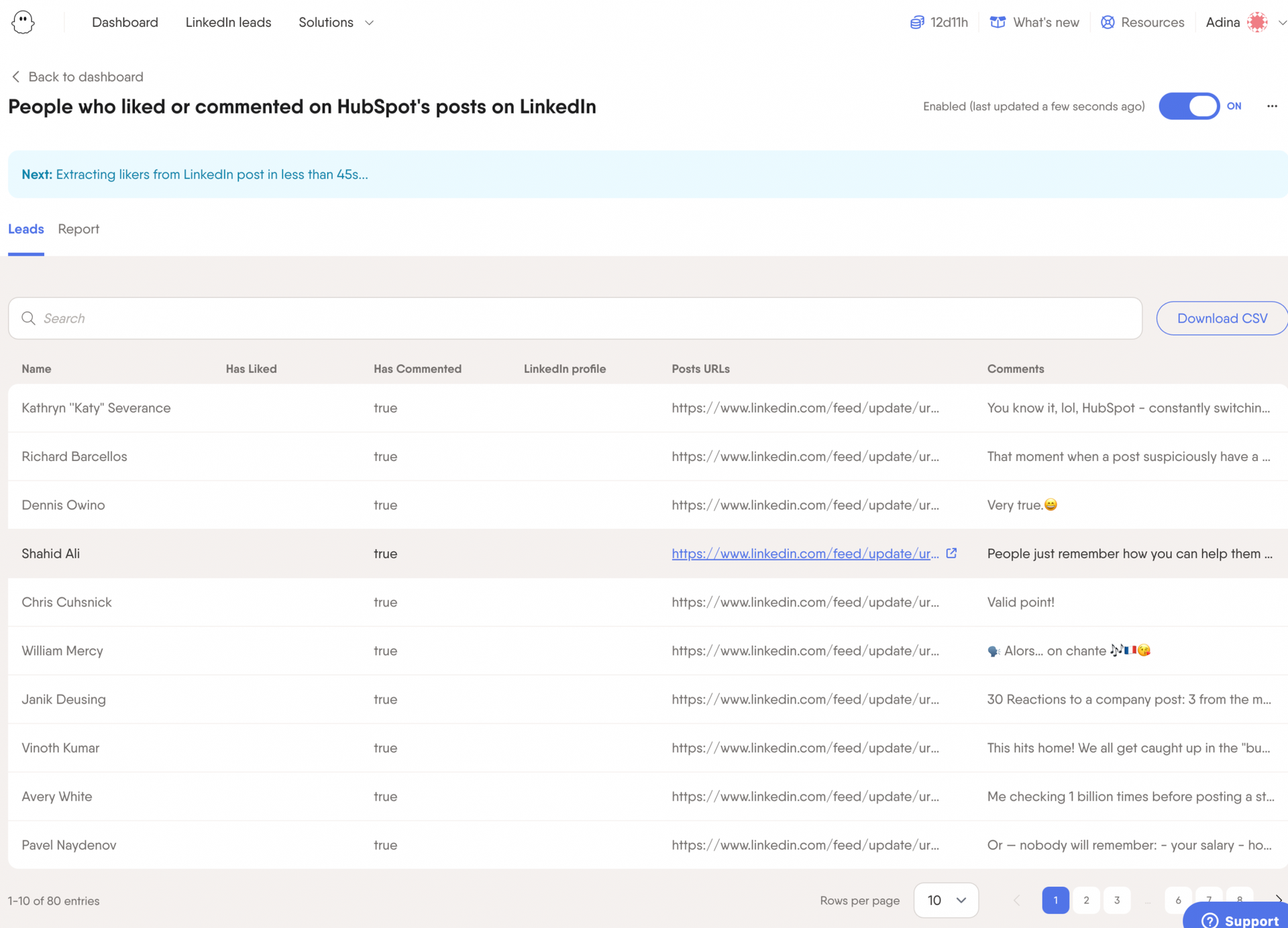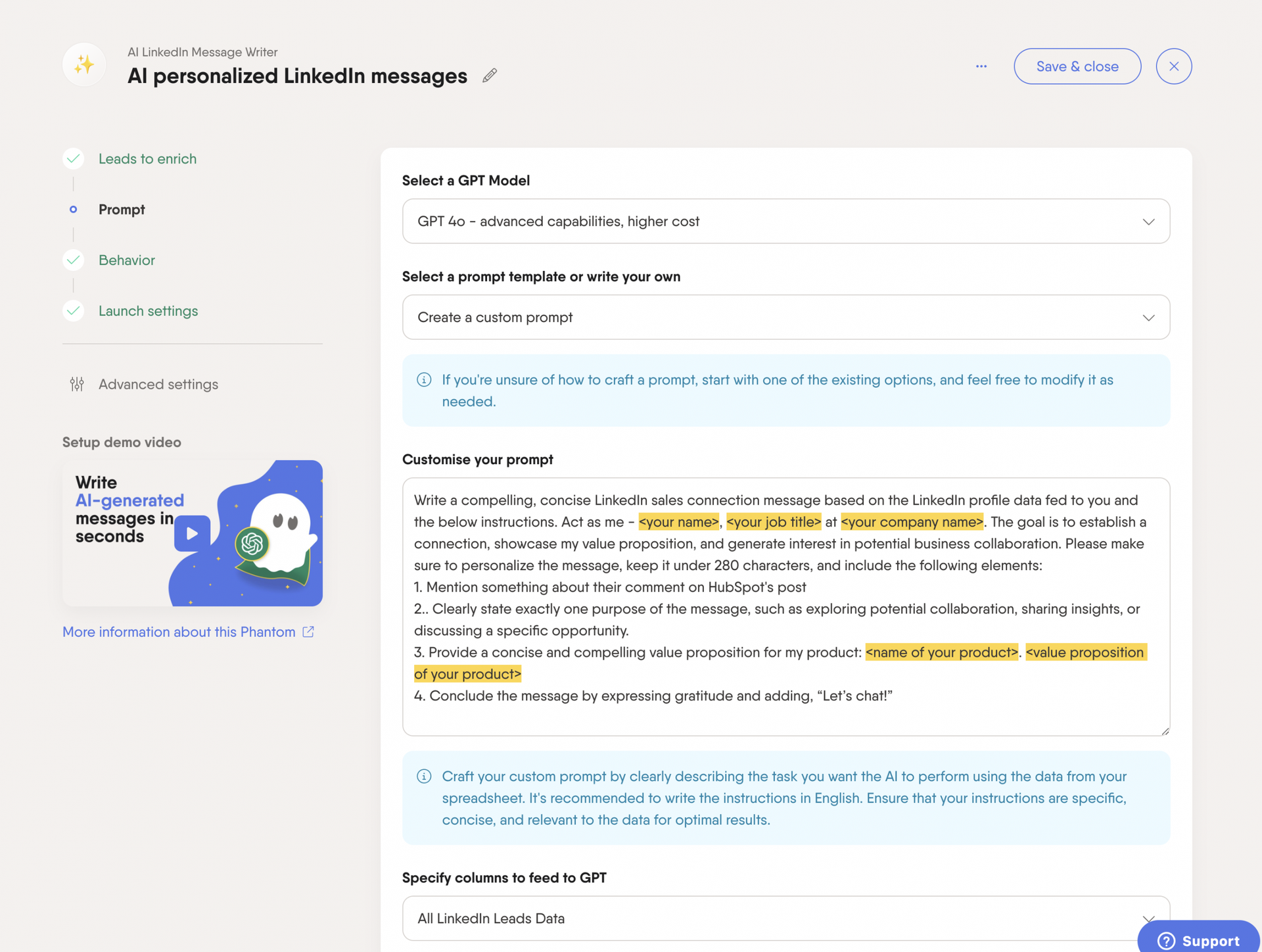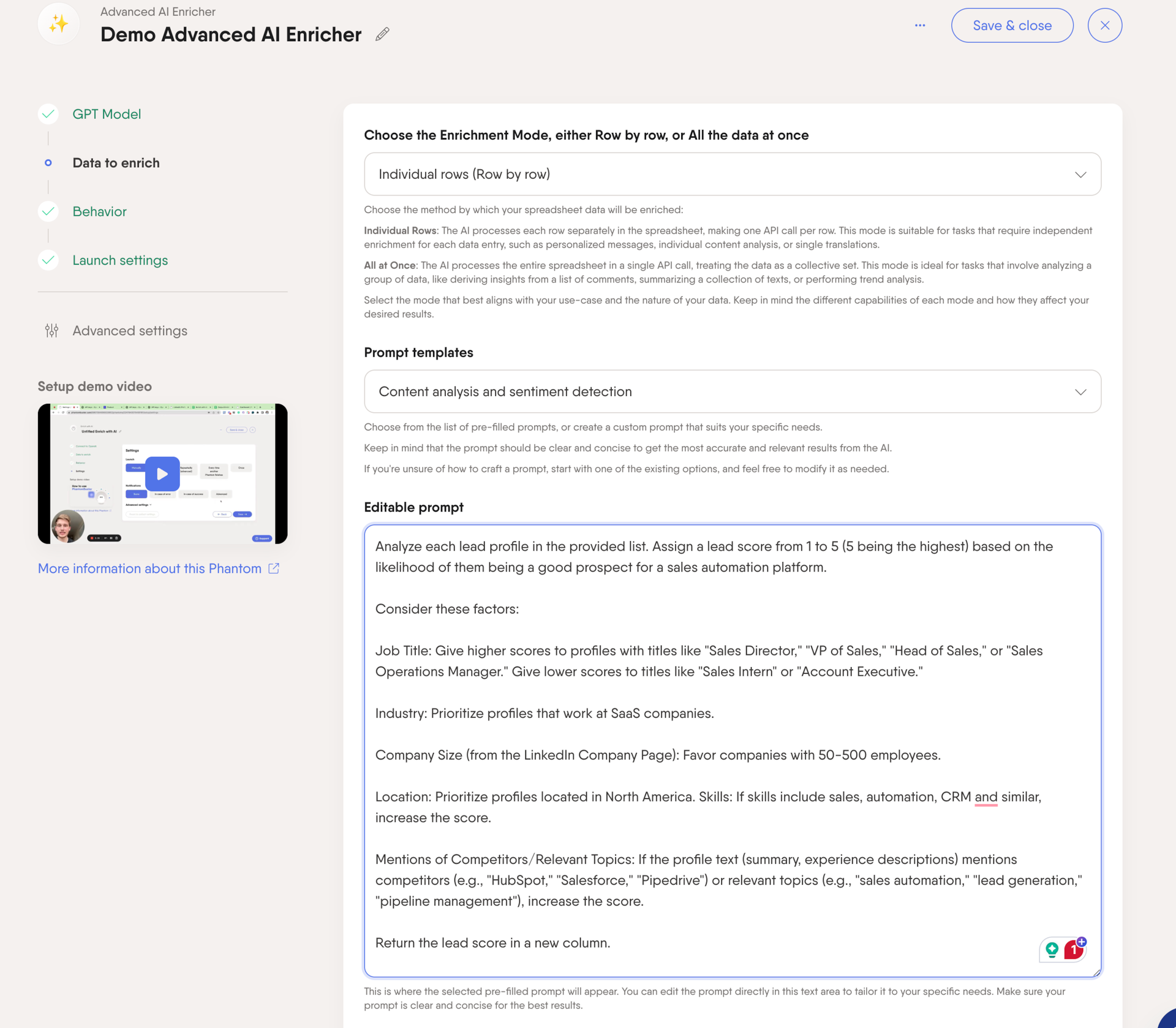Generating and qualifying leads is a core challenge for sales teams. Not all leads are created equal, while some are ready to buy now, others need nurturing.
This guide clarifies the differences between cold, warm, and hot leads, and provides practical strategies for identifying each type and moving them through your sales funnel. You’ll learn how to prioritize your efforts for maximum impact and improve your overall conversion rates.
Overview
Understanding lead temperature is key to maximizing your sales efforts. Here’s a quick overview:
- Hot leads are highly qualified buyers in the final stage of the sales process, actively seeking a solution and ready to make a purchase.
- Warm leads are prospects who have shown initial interest but aren’t quite ready to talk to sales, requiring nurturing to move them closer to a decision.
- Cold leads are prospects with no prior engagement, unaware of your brand, and requiring initial awareness-building efforts.
- To find hot leads, set up a lead scoring model based on buying signals, engagement metrics, and firmographic data. Track high-intent behaviors like demo requests, content downloads, and G2/Capterra visits.
To maximize your conversion rates, focus on these key strategies:
- To turn cold leads into warm leads, pre-qualify them to ensure they fit your ICP, then use a 14-21 day outreach cadence with personalized touchpoints. Leverage AI LinkedIn Message Writer to automate communications and send tailored messages.
- To identify cold leads that match your ICP, optimize lead generation by scraping LinkedIn profiles for critical data like job titles, location, industry, and company size, then apply AI Lead Scoring to rank high-potential prospects.
- To enable warm lead generation, engage with your competitors’ social media audiences and capture leads from their posts using LinkedIn Post Commenter and Liker Scraper.
- Enable warm lead generation by engaging with competitors’ social media audiences and capturing leads from their posts with LinkedIn Post Commenter and Liker Scraper.
- For cold lists to turn warm, pre-qualify cold leads to ensure they fit your ICP. Use a 14-21-day outreach cadence with personalized touchpoints to build familiarity. Leverage AI LinkedIn Message Writer to automate sales lead communications and send personalized messages.
- Optimize cold lead generation by scraping LinkedIn profiles for critical data like job titles, location, industry, and company size. You can then apply AI Lead Scoring to rank high-potential cold leads from the list.
What are hot leads?
Hot leads are highly qualified buyers in the final stage of the sales process, ready to make a purchase. They’ve demonstrated strong intent by requesting demos, asking about pricing, or engaging with sales-focused content.
Think of a decision-maker who requests a demo and follows up with questions about specific features. That’s a hot lead.
These leads require immediate attention and typically convert quickly, delivering a high return on investment. Identifying them consistently requires a robust lead scoring system.
What are warm leads?
Warm leads have shown interest in your product or service but aren’t yet ready to talk to sales.
They’ve engaged with your marketing – visiting your website, engaging with your LinkedIn posts, attending webinars – but haven’t requested direct contact. Look to identify buying signals.
For example, a prospect attending a webinar, commenting on a specific topic, or even engaging with content from your competitors could be showing buying intent.
Hot leads have immediate buying intent; warm leads are still researching and evaluating options.
Nurture warm leads with personalized content, case studies, and automated follow-up sequences to build trust and identify those showing stronger buying signals.
What are cold leads?
Cold leads are unaware of your company and haven’t initially expressed interest in your solution. Sales reps often identify them through outbound prospecting efforts like targeted advertising or outreach via tools like LinkedIn Sales Navigator.
For example, reaching out to a new lead in your target industry via LinkedIn to introduce your services is a cold outreach effort.
“Warm up” cold leads with valuable content and targeted ads, consistently tracking engagement to identify potential opportunities and build awareness over time.
The main differences between hot, cold and warm leads
To consistently close more deals and shorten the sales cycle, first understand the nuances between hot, warm, and cold leads.
Identifying each lead’s stage helps sales teams prioritize effectively, personalize outreach at scale, and accelerate prospects through the sales funnel.
This isn’t just about labeling leads; it’s about maximizing your time and resources on the opportunities most likely to convert.
Here’s a detailed comparison to help you differentiate and strategize your cold, hot and warm outbound strategies:
| Aspect | Cold Lead | Warm Lead | Hot Lead |
| Definition | Unqualified prospects with no prior interaction.
They may not even be aware of your company or the problem you solve. |
Prospects who have shown initial interest but aren’t actively evaluating solutions yet.
They’re exploring options and gathering information. |
Highly interested buyers in the final stage of the sales process, actively seeking a solution like yours.
They’re ready to talk to sales. |
| Lead Source | • Purchased lists • LinkedIn Sales Navigator searches • Outbound prospecting • Website visitors with no identified intent |
• Email subscribers • Social media followers • Webinar attendees • LinkedIn post engagers • Competitor comparison searches |
• Inbound demo requests • Free trial sign-ups • Sales-ready referrals • Abandoned shopping carts • Direct inquiries |
| Key Buying Signal | • No visible buying intent. | Mild buying intent:
• Downloading gated content |
Clear intent to purchase:
• requesting pricing • scheduling a demo |
| Sales Action | • Implement a 14-21 day automated cadence focused on awareness and problem framing.
Offer: |
• Implement a 5-7 day strategic touch sequence alternating between: • Value-add content (case studies, relevant educational content) • Personalized outreach focusing on building rapport and understanding their challenges. |
• Respond within 24-48 hours with a multi-channel approach (call, email, LinkedIn). • Prioritize a direct conversation to understand their needs and present a tailored solution. |
| Content to Share | • ROI calculators • Competitor comparisons • Industry insights • Thought leadership articles • Marketing collateral. |
• Share customer success stories • Detailed product guides • Webinars addressing specific pain points • Relevant content showcasing your expertise. |
• Pricing information • Case studies demonstrating ROI • Contract templates • Personalized proposals. |
| Success Metrics | • Cost per acquired meeting • MQL volume • Initial engagement rate • Website traffic from cold outreach. |
• Lead-to-opportunity conversion rate • Content engagement depth • Sales velocity • Track lead progress |
• Close rate • Average deal size • Discount reduction • Contract turnaround time |
How to find hot leads?
There’s a good chance you already have hot leads sitting in your pipeline. You just haven’t identified them yet. The fastest way to spot them is by setting up a lead scoring system based on:
- Buying signals like leads who request demos or visit G2/Capterra for your product category
- Engagement metrics like email opens, clicks, content downloads, website visits, form submissions
- Demographic and firmographic data, including industry, budget, or job title that matches your ICP
That said, hot leads don’t just magically exist.
They usually start as warm leads that, with the right mix of personalized content and timely follow-ups, turn into hot leads.
Nurture those warm leads, and you’ll keep a steady flow of hot leads in your pipeline.
How to turn warm leads into hot leads?
You can build a pipeline of warm leads by focusing on two key strategies.
First, qualify existing leads in your pipeline – those generated from marketing efforts or other prospecting activities – using a lead scoring model.
This helps you identify which prospects are already showing signs of interest.
Second, prioritize directly adding warm leads to your pipeline, rather than relying on the traditional approach of nurturing cold leads over time.
A consistent influx of warm prospects ensures a steady stream of potential customers.
How to generate warm leads?
One effective way to add warm leads is to source profiles of people who have engaged with your competitors’ posts on LinkedIn.
You can use LinkedIn Post Commenter and Liker Scraper to automatically extract profiles and their original comment from the post URL.

This automation checks for new leads daily and adds them to your list, allowing you to continuously qualify fresh prospects.

With your prospect list ready, integrate it with your lead scoring system to prioritize those showing the highest intent.
Next, leverage the data you’ve collected instead of relying on generic outreach.
Use the specific content they engaged with, their comments, and their professional details to create personalized connection messages.
You can use PhantomBuster’s AI LinkedIn Message Writer to generate highly targeted connection requests messages based on custom prompts and the rich data you’ve already captured.
Imagine referencing a specific point they made in a comment on a competitor’s post, or acknowledging their expertise in a relevant field. This level of personalization will increase engagement and response rates.
Define your outreach prompt and customize the tone. You’ll get personalized messages ready to send, allowing you to connect with prospects on a deeper level and accelerate the sales process.

How to turn cold leads into warm leads?
The key to efficiently turning cold leads into warm leads is rapid qualification. Identify leads that align with your Ideal Customer Profile (ICP) before investing in outreach.
This involves enriching your data to understand their needs and nurturing qualified leads with targeted engagement.
Don’t waste valuable sales time on prospects who have no chance of converting
How to identify cold leads that match your ICP
To quickly identify high-potential prospects, automate data enrichment using PhantomBuster’s LinkedIn Profile Scraper. This helps you capture key details like job title, company size, tech stack, and career moves, without copy-pasting data manually.
Once enriched, use PhantomBuster’s Advanced AI Enricher to segment leads based on ICP fit. This automation uses artificial intelligence to analyze lead data against the criteria you define in a prompt, identifying prospects who closely match your ideal customer profile.
This allows you to prioritize outreach to sales-qualified leads (SQLs) and avoid wasting time on those who aren’t a good match.

By combining data-driven qualification with targeted engagement, you’ll efficiently transform cold prospects into warm opportunities.
How to engage with cold leads in your sales process?
Even if a lead hasn’t actively expressed interest, engaging with them can build awareness and position you as a valuable resource. The key is to provide value before asking for anything in return.
Start by consistently engaging with their content on platforms like LinkedIn.
Go beyond simply liking posts. Leave thoughtful comments demonstrating your understanding of their industry and challenges and share relevant articles or insights that might interest them.
Here’s an example of an introductory message you can use:
Hi [Name], I’ve been following your work in [Industry] and appreciate your insights on [Specific Topic]. We help companies like yours overcome [relevant challenge] with [briefly state your solution]. Would you be open to connecting and sharing your thoughts on current industry trends?
Once connected, continue to monitor their activity and share relevant content. Building a relationship takes time, so focus on consistently providing value over 2-3 weeks.
By prioritizing genuine engagement and offering helpful resources, you’ll gradually warm up cold leads and increase your chances of converting them into qualified opportunities.
Hot leads FAQs
What is an example of a hot lead?
A hot lead is actively seeking a solution and ready to buy. For example, someone who requests a product demo, asks for a price quote, or is in contract negotiations.
How to identify hot leads?
To identify hot leads,, look for prospects who demonstrate high buying intent, such as requesting demos, downloading pricing guides, or actively engaging with sales-focused content. Lead scoring systems can help prioritize these leads based on granular criteria.
How to track lead progress?
Use a CRM to track how leads move through your sales pipeline. First, define clear pipeline stages (e.g., Qualified, Demo Scheduled, Proposal Sent, Negotiation). Then, monitor where each lead is positioned within those stages to identify bottlenecks and prioritize follow-up.
